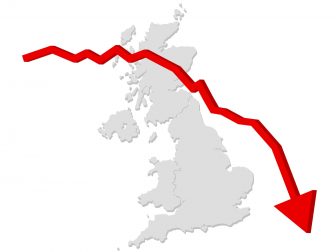 England’s dwindling social housing stock is poised to plummet by an additional 189,000 properties through the Right to Buy scheme alone by 2040, research has revealed.
England’s dwindling social housing stock is poised to plummet by an additional 189,000 properties through the Right to Buy scheme alone by 2040, research has revealed.
Data from the development consultancy Marrons revealed that 89,091 social rent properties owned by councils were sold through Right to Buy nationally between 2015-16 and 2022-23.
The consultancy estimated that if this continued it would result in a loss of 189,318 social homes by 2040.
Birmingham is the local authority area that is set to lose the greatest number of social homes through the scheme by 2040 (10,504), followed by Leeds (9,110), Sheffield (6,058), Leicester (5,895) and Nottingham (5,138). Sandwell (4,420), Hull (3,878), Wolverhampton (3,770), Barking and Dagenham (3,283), and Wigan (3,100) make up the remainder of the top 10.
Craig Pettit, planning director at Marrons, expressed grave concern because of the increase to 1.2 million of the number of people on social housing waiting lists in 2023.
He said: “It is extremely concerning that by 2040, at least 189,000 properties could be taken out of our country’s social housing stock – a harrowing forecast that comes in the wake of alarming surges in social housing waiting lists, with more than 1.2 million people being on their local authority housing register in 2023, and affordability remaining considerably worse than in the late-90s.
“The introduction of the Right to Buy scheme, which enabled council tenants to buy their homes for a significantly reduced price, was turbo-charged in 1980. Within five years, half a million council homes had been sold under the initiative in England alone. However, the scheme has the potential to falsify home ownership statistics and mask deeper systemic issues.
“England is losing social housing much faster than it is being built and the losses are mounting up – in fact, according to housing and homelessness charity Shelter, social housebuilding in England being at its lowest rate in decades. Demand is continually outstripping supply, leaving the poorest households with no choice but to enter unaffordable private tenancies – putting them at risk of homelessness.
“Perhaps most worryingly, there is no indication that the proceeds from the sale of ex-social homes are being reinvested into providing new properties under the initiative. At the very least, sale monies should be reinvested to provide a stepping stone programme from social housing to home ownership for generations to come.”
By 2040, England’s 16+ population is expected to grow by 6% to almost 50 million people. Notably, Greater London and the East Midlands are the fastest-growing regions – each anticipating 12% growth to 8 million and 4.5 million, respectively – while the North East shows the slowest growth at 5% to reach 2.3 million people.
To meet the burgeoning demand, at least 5.4 million homes need to be constructed across England by 2040. The South East leads the way in housing need outside of Greater London, with demand for more than 950,000 homes. In contrast, the North East demands the least, with a requirement of 112,388 properties.
Louise Drew, head of building communities at law firm Shakespeare Martineau, commented: “Sadly, the Right to Buy system is open to abuse. There are numerous instances where vulnerable people have been approached and offered money to allow them to purchase their home, only to be forced to pass it over to predatory third parties after the five-year ‘no selling’ period has elapsed.
“There are also cases where children have convinced parents to buy their council houses and pass them over to them to avoid inheritance tax, after which the parents have found themselves exposed to the risk of homelessness.
“While it is positive that Right to Buy offers a route to home ownership that wouldn’t be possible for many people, it isn’t as perfect as it might look to be on paper. Too many houses sold under the scheme end up back on the private rental market – undermining the core aim of the scheme, further exacerbating the housing crisis and driving up prices.”


Just stop it-simple can’t have mom and pop living/owning in a 4 bed council house.
You must be logged in to like or dislike this comments.
Click to login
Don't have an account? Click here to register
In 6 weeks we might have a government at last that recognises the need for good social housing. A pity the Tories lost the plot on this one (as with many other things). More council houses were built in the 1950s and early sixties under the MacMillan government than at any other time. And they were decent houses built to Parker-Morris standards.
You must be logged in to like or dislike this comments.
Click to login
Don't have an account? Click here to register